#taylor alison swift the music industry
Text
TAYLOR SWIFT TOUR ICONS



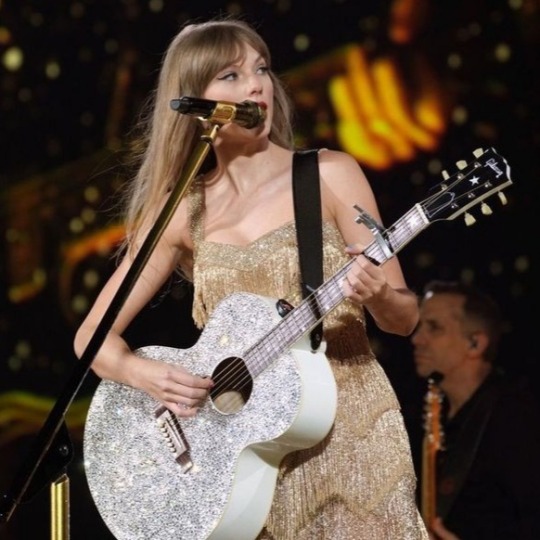
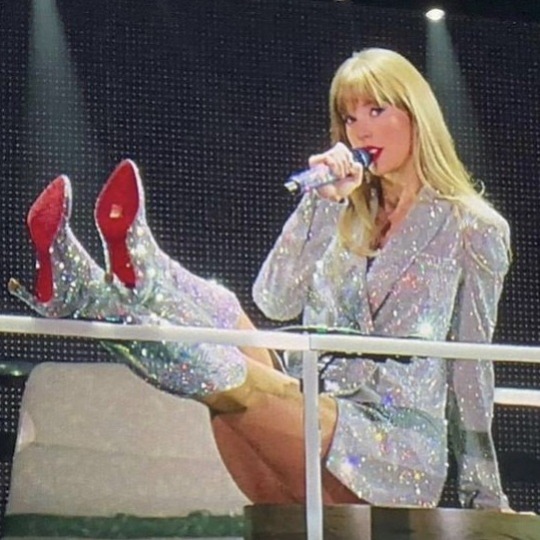




likes and reblogs are appreciated <3
#taylor swift#taylor alison twift#taylor swift icons#taylor swift headers#taylor swift layouts#ts#ts icons#ts headers#ts layouts#taylor swift packs#taylor swift messy packs#taylor swift moodboard#swifties#taylor's version#taylor swift tour#music industry#speak now#fearless#red#1989#reputation#lover#folklore#evermore#midnights#taylor swift wallpaper#taylor swift icon#icons#headers#layouts
263 notes
·
View notes
Text
It is so crazy for some of the swifties right now to come after Joe Alwyn after this new love team of our mother surfaced on the internet. Swifties said that he doesn't let her shine or blurt some words related to the song "Bejeweled" or anything near to that idea. Y'all don't remember how Taylor lowkey launched her relationship with Miss Americana while saying that she wanted it to be private, especially because of the events that led to her Reputation Era. He clearly kept what Taylor wanted because they were comfortable with it. Also, people talking about Joe not being able to fight with their relationship is intrusive and unnecessary. Taylor didn't write "Peace" for no reason because that is what she feared, and she saw it happening in their relationship. A person can walk away if they are not comfortable anymore even how painful it is—and that is good for both parties to avoid bottled-up pain and future heartbreaks. You don't need to think critically to know that it is hard for them to break up because that is many years of love. It is really just annoying for some of our brothers and sisters in the fandom to talk shit knowing their relationship is the longest our mom had, giving us 5 albums that made us fall in love, cry, and hope for the love we deserve. Not to go against the happiness and excitement of everyone for our mom, but you don't need to drag someone just to go for the trend and just for you to have something to talk about. Anyways, our mom deserves to be happy!!!
#taylor nation#taylor swift#taylor alison swift#swifties#evermore is the best album#the music industry#1989 taylor's version#is#coming
25 notes
·
View notes
Text
Taylor is giving high school bully like ARE YOU SCARED OF ME?!?!?! YOU SHOULD BE, BITCH!!
#taylor swift#the tortured poets department#tortured poets department#ts ttpd#ttpd#ttpd era#taytay#taylor#i love taylor swift#i love you taylor#taylor alison swift#taylor nation#taylor swift lyrics#taylor swift the tortured poets department#i love taylor with all my heart#i love taylor so much#taylor swift is amazing#taylor swift is the music industry#taylor swift is a lyrical genius
7 notes
·
View notes
Text
ALL TOO WELL
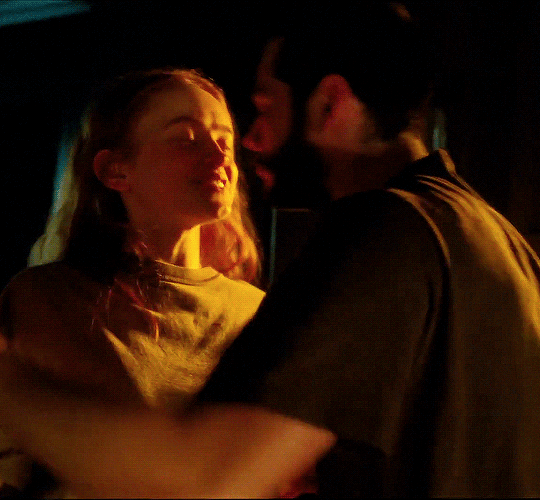
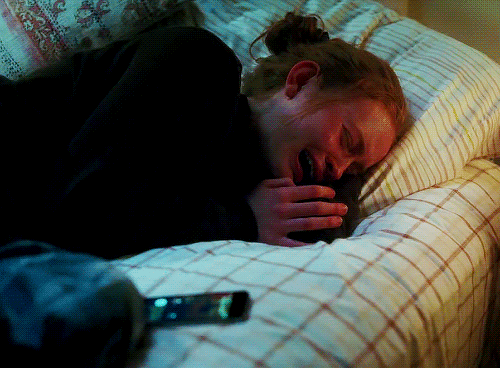


#taylor swift#taylor alison swift#sadie sink#dylan o brian#dylan o' brien#the music industry#swifties#taylor is the best#all too well#jake gyllenhaal#red taylor swift#all too well taylor's version#all too well taylor swift
22 notes
·
View notes
Text
LONG LIVE THE MUSIC INDUSTRY
@taylorswift @taylornation
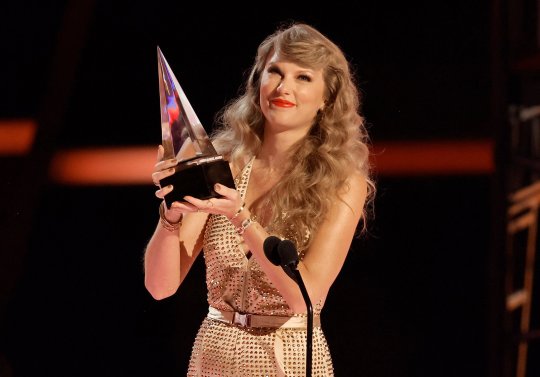

#taylor swift#taylors version#taylor nation#tay tay#taylor alison swift#all too well#atw10mv#tswizzle#ts#music industry#proud
2 notes
·
View notes
Text
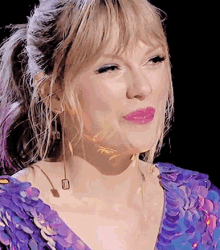
I feel like the main reason why people dislike Taylor Swift is because they believe in that “She only sings about her relationships”¹/“She’s immature”² or something of the sort.
But honestly, ¹ they haven’t listened to most other tracks of hers. People often just listen to popular tracks/‘TikTok’ songs and they come across Blank Space, Shake it Off, Wildest Dreams, or even ME!, Cardigan, etc. Have they ever listened to Afterglow, Daylight, New Year’s Day, Wonderland, Peace, Hoax, Happiness or Coney Island? Probably not. These unappreciated songs also show her maturity ²
Most of the other reasons could simply be that they think she ‘tries to bring others down’ (which is basically the opposite of what actually happened to her)
Like, seriously—it was never her who tried to start a feud with West or Kardashian. Is it that hard so believe?
Or maybe some people are too delusional. Or they dislike her for standing up for herself. Or they don’t want women to get equal rights.
What is there to not like about her? Her maturity, her glowing smile, her writing, her personality!
She baked cookies for her fans (and her father bought pizzas for fans waiting for her Good Morning America interview in the morning), sang to sick children in a hospital, didn't just say she supports the LGBTQIA+ community, but proved it by starting a petition and through her song You Need To Calm Down, but obviously the media found her relationships more interesting than this.
How is her love life anyone else’s matter to gossip about?
These are a few of her beautiful lyrics which show her maturity over the years and how it’s not always the other one who is at blame:
I can't make it go away by making you a villain
I guess it's the price I paid for seven years in Heaven
And I pulled your body into mine
Every goddamn night, now I get fake niceties
No one teaches you what to do
When a good man hurts you
And you know you hurt him too
—happiness
After giving you the best I had
Tell me what to give after that
All you want from me now is the green light of forgiveness
You haven't met the new me yet
And I think she'll give you that
—happiness
I blew things out of proportion, now you're blue
Put you in jail for something you didn't do
I pinned your hands behind your back, oh
Thought I had reason to attack, but no
Fighting with a true love is boxing with no gloves
Chemistry 'til it blows up, 'til there's no us
Why'd I have to break what I love so much?
It's on your face, and I'm to blame, I need to say
Hey
It's all me in my head
I'm the one who burned us down
But it's not what I meant
Sorry that I hurt you
I don't wanna do, I don't wanna do this to you
I don't wanna lose, I don't wanna lose this with you
I need to say, hey
It's all me, just don't go
Meet me in the afterglow
—Afterglow
(Honestly, the whole of Afterglow would be more accurate)
There is also the issue of people saying that ‘she goes through men too swiftly’
Now, why would you even say that? Is it your right to judge her actions? How is wearing something that shows your knees a sign of wanting attention from men? Why can’t she wear anything she wants to?
It's not like she’ll find the one at once. Maybe she doesn’t want to settle down. It’s her choice, who are you to decide what she should do?
Now she has been with someone for a long time, and she actually seems happy.
Another admirable trait of hers is that she doesn’t sing anyone else’s songs or let anyone else take credit for her songs.
Every song of hers contains her own writing, and collaboration with her friends or alliances if not so. But she never took credit for something that isn’t hers.
This was not to offend anyone. Just something from my own perspective.
So here goes the question: do you like Taylor Swift? Why?
And as TS very wisely said,
And we see you over there on the internet
Comparing all the girls who are killing it
But we figured you out
We all know now, we all got crowns
You need to calm down
#taylor alison swift#taylor swift#i stand with taylor#taylor swift lyrics#truth#rant#perpective#afterglow#Taylor's version happened because they sold her record to someone else. It's not about attention#stop being judgemental#why the hate#music#music industry#i woke up and chose to spit facts
2 notes
·
View notes
Text
Dear Taylor,
May Thirty-four be Evermore Fearless, relentless, fruitful and kind.

Thank you for all that you do for us.
💚💛💜❤️🩵🖤🩷🩶🤎💙
All our love,
Swifities
#taylor swift#happy birthday taylor#hbd taylor#happy birthday#34#the music industry#dr taylor swift#thank you#ts13#birthday wish#taylurking#taylor alison swift#the eras tour#1989 tv
1 note
·
View note
Text


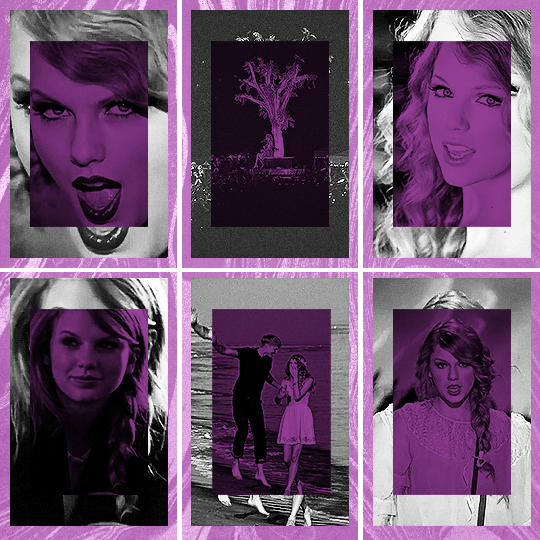

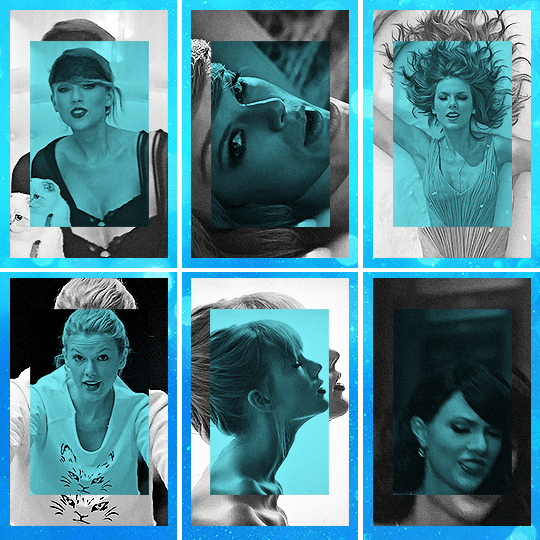


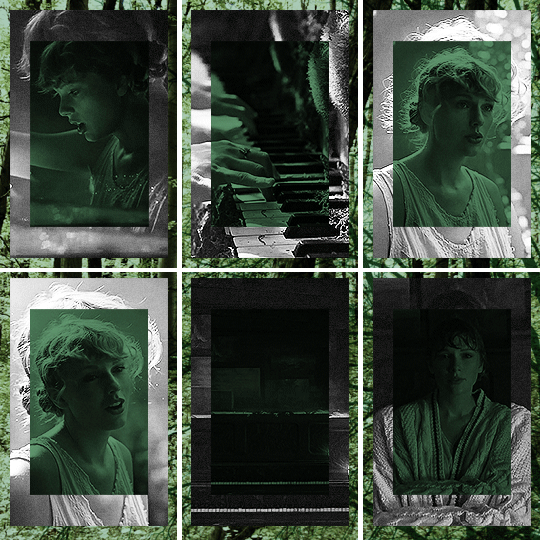
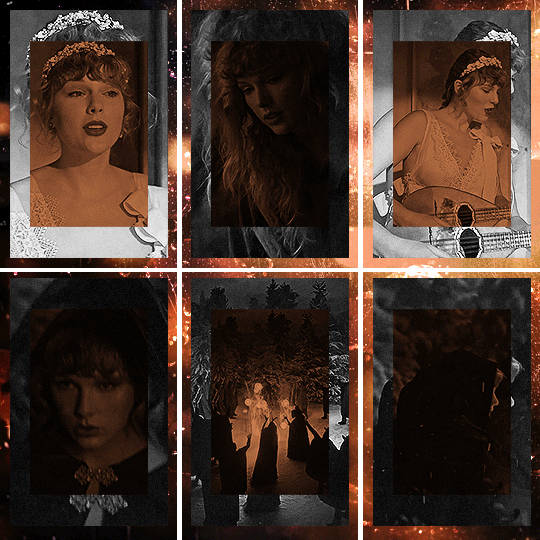
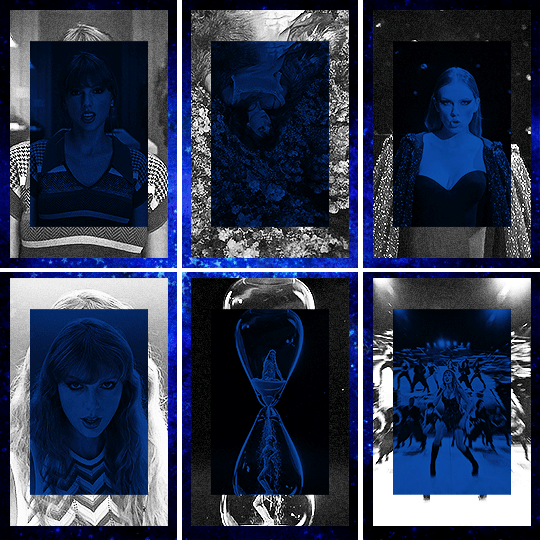
TAYLOR ALISON SWIFT is an American singer-songwriter recognized for her songwriting, musical versatility, artistic reinventions, and influence on the music industry.
Swift has been referred to as one of the greatest songwriters of all time by several publications. English-language scholars have noted that her literary and melodic sensibility and verbal writing style are rare amongst her peers. Swift divides her writing into three types: "quill lyrics," referring to songs rooted in antiquated poeticism; "fountain pen lyrics," based on modern and vivid storylines; and "glitter gel pen lyrics," which are lively and frivolous. Swift has influenced numerous music artists and her albums have inspired an entire generation of singer-songwriters. Journalists praise her ability to reform industry practices, noting how her actions changed streaming policies, prompted awareness of intellectual property in new musicians, and reshaped ticketing models. Senior artists such as Paul McCartney, Mick Jagger, Madonna, and Dolly Parton have praised her musicianship. Carole King regards Swift her "professional granddaughter" and thanked her for "carrying the torch forward." Springsteen called her a "tremendous" writer, while Ringo Starr and Billy Joel considered Swift the Beatles' successor. Britney Spears labeled Swift "the most iconic pop woman of our generation."
#taylor swift#mygif#tswiftgif#taylorswiftedit#tswiftedit#tuserheidi#userkarolina#usersapphi#userriel#tusermiles#userahne#userhallie#userdahlias#tuserecho#thingschanged#user_sammy#userbbelcher#usermusic#dailymusicqueens#alielook
539 notes
·
View notes
Text
In 2006, the year Taylor Swift released her first single, a closeted country singer named Chely Wright, then 35, held a 9-millimeter pistol to her mouth. Queer identity was still taboo enough in mainstream America that speaking about her love for another woman would have spelled the end of a country music career. But in suppressing her identity, Ms. Wright had risked her life.
In 2010, she came out to the public, releasing a confessional memoir, “Like Me,” in which she wrote that country music was characterized by culturally enforced closeting, where queer stars would be seen as unworthy of investment unless they lied about their lives. “Country music,” she wrote, “is like the military — don’t ask, don’t tell.”
The culture in which Ms. Wright picked up that gun — the same one in which Ms. Swift first became a star — was stunningly different from today’s. It’s dizzying to think about the strides that have been made in Americans’ acceptance of the L.G.B.T.Q. community over the past decade: marriage equality, queer themes dominating teen entertainment, anti-discrimination laws in housing and, for now, in the workplace. But in recent years, a steady drip of now-out stars — Cara Delevingne, Colton Haynes, Elliot Page, Kristen Stewart, Raven-Symoné and Sam Smith among them — have disclosed that they had been encouraged to suppress their queerness in order to market projects or remain bankable.
The culture of country music hasn’t changed so much that homophobia is gone. Just this past summer, Adam Mac, an openly gay country artist, was shamed out of playing at a festival in his hometown because of his sexual orientation. In September, the singer Maren Morris stepped away from country music; she said she did so in part because of the industry’s lingering anti-queerness. If country music hasn’t changed enough, what’s to say that the larger entertainment industry — and, by extension, our broader culture — has?
Periodically, I return to a video, recorded by a shaky hand more than a decade ago, of Ms. Wright answering questions at a Borders bookstore about her coming out. She likens closeted stardom to a blender, an “insane” and “inhumane” heteronormative machine in which queer artists are chewed to bits.
“It’s going to keep going,” Ms. Wright says, “until someone who has something to lose stands up and just says ‘I’m gay.’ Somebody big.” She continues: “We need our heroes.”
What if someone had already tried, at least once, to change the culture by becoming such a hero? What if, because our culture had yet to come to terms with homophobia, it wasn’t ready for her?
What if that hero’s name was Taylor Alison Swift?
In the world of Taylor Swift, the start of a new “era” means the release of new art (an album and the paratexts — music videos, promotional ephemera, narratives — that supplement it) and a wholesale remaking of the aesthetics that will accompany its promotion, release and memorializing. In recent years, Ms. Swift has dominated pop culture to such a degree that these transformations often end up altering American culture in the process.
In 2019, she was set to release a new album, “Lover,” the first since she left Big Machine Records, her old Nashville-based label, which she has since said limited her creative freedom. The aesthetic of what would be known as the “Lover Era” emerged as rainbows, butterflies and pastel shades of blue, purple and pink, colors that subtly evoke the bisexual pride flag.
On April 26, Lesbian Visibility Day, Ms. Swift released the album’s lead single, “ME!,” in which she sings about self-love and self-acceptance. She co-directed a campy music video to accompany it, which she would later describe as depicting “everything that makes me, me.” It features Ms. Swift dancing at a pride parade, dripping in rainbow paint and turning down a man’s marriage proposal in exchange for a … pussy cat.
At the end of June, the L.G.B.T.Q. community would celebrate the 50th anniversary of the Stonewall Riots. On June 14, Ms. Swift released the video for her attempt at a pride anthem, “You Need to Calm Down,” in which she and an army of queer celebrities from across generations — the “Queer Eye” hosts, Ellen DeGeneres, Billy Porter, Hayley Kiyoko, to name a few — resist homophobia by living openly. Ms. Swift sings that outrage against queer visibility is a waste of time and energy: “Why are you mad, when you could be GLAAD?”
The video ends with a plea: “Let’s show our pride by demanding that, on a national level, our laws truly treat all of our citizens equally.” Many, in the press and otherwise, saw the video as, at best, a misguided attempt at allyship and, at worst, a straight woman co-opting queer aesthetics and narratives to promote a commercial product.
Then, Ms. Swift performed “Shake It Off” as a surprise for patrons at the Stonewall Inn. Rumors — that were, perhaps, little more than fantasies — swirled in the queerer corners of her fandom, stoked by a suggestive post by the fashion designer Christian Siriano. Would Ms. Swift attend New York City’s WorldPride march on June 30? Would she wear a dress spun from a rainbow? Would she give a speech? If she did, what would she declare about herself?
The Sunday of the march, those fantasies stopped. She announced that the music executive Scooter Braun, who she described as an “incessant, manipulative” bully, had purchased her masters, the lucrative original recordings of her work.
Ms. Swift’s “Lover” was the first record that she created with nearly unchecked creative freedom. Lacking her old label’s constraints, she specifically chose to feature activism for and the aesthetics of the L.G.B.T.Q. community in her confessional, self-expressive art. Even before the sale of her masters, she appeared to be stepping into a new identity — not just an aesthetic — that was distinct from that associated with her past six albums.
When looking back on the artifacts of the months before that album’s release, any close reader of Ms. Swift has a choice. We can consider the album’s aesthetics and activism as performative allyship, as they were largely considered to be at the time. Or we can ask a question, knowing full well that we may never learn the answer: What if the “Lover Era” was merely Ms. Swift’s attempt to douse her work — and herself — in rainbows, as so many baby queers feel compelled to do as they come out to the world?
There’s no way of knowing what could have happened if Ms. Swift’s masters hadn’t been sold. All we know is what happened next. In early August, Ms. Swift posted a rainbow-glazed photo of a series of friendship bracelets, one of which says “PROUD” with beads in the color of the bisexual pride flag. Queer people recognize that this word, deployed this way, typically means that someone is proud of their own identity. But the public did not widely view this as Ms. Swift’s coming out.
Then, Vogue released an interview with Ms. Swift that had been conducted in early June. When discussing her motivations for releasing “You Need to Calm Down,” Ms. Swift said, “Rights are being stripped from basically everyone who isn’t a straight white cisgender male.” She continued: “I didn’t realize until recently that I could advocate for a community that I’m not a part of.” That statement suggests that Ms. Swift did not, in early June, consider herself part of the L.G.B.T.Q. community; it does not illuminate whether that is because she was a straight, cis ally or because she was stuck in the shadowy, solitary recesses of the closet.
On Aug. 22, Ms. Swift publicly committed herself to the as-of-then-unproven project of rerecording and rereleasing her first six albums. The next day, she finally released “Lover,” which raises more questions than it answers. Why does she have to keep secrets just to keep her muse, as all her fans still sing-scream on “Cruel Summer”? About what are the “hundred thrown-out speeches I almost said to you,” in her chronicle of self-doubt, “The Archer,” if not her identity? And what could the album’s closing words, which come at the conclusion of “Daylight,” a song about stepping out of a 20-year darkness and choosing to “let it go,” possibly signal?
I want to be defined by the things that I love,
Not the things I hate,
Not the things that I’m afraid of, I’m afraid of,
Not the things that haunt me in the middle of the night,
I just think that,
You are what you love.
The first time I viewed “Lover” through the prism of queerness, I felt delirious, almost insane. I kept wondering whether what I was perceiving in her work was truly there or if it was merely a mirage, born of earnest projection.
My longtime reading of Ms. Swift’s celebrity — like that of a majority of her fan base — had been stuck in the lingering assumptions left by a period that began more than a decade and a half ago, when a girl with an overexaggerated twang, Shirley Temple curls and Georgia stars in her eyes became famous. Then, she presented as all that was to be expected of a young starlet: attractive yet virginal, knowing yet naïve, not talented enough to be formidable, not commanding enough to be threatening, confessional, eager to please. Her songs earnestly depicted the fantasies of a girl raised in a traditional culture: high school crushes and backwoods drives, princelings and wedding rings, declarations of love that climax only in a kiss — ideally in the pouring rain.
When Ms. Swift was trying to sell albums in that late-2000s media environment, her songwriting didn’t match the image of a sex object, the usual role reserved for female celebrities in our culture. Instead, the story the public told about her was that she laundered her affection to a litter of promising grown men, in exchange for songwriting inspiration. A young Ms. Swift contributed to this narrative by hiding easy-to-decode clues in liner notes that suggested a certain someone was her songs’ inspiration (“SAM SAM SAM SAM SAM SAM,” “ADAM,” “TAY”) or calling out an ex-boyfriend on the “Ellen” show and “Saturday Night Live.” Despite the expansive storytelling in Ms. Swift’s early records, her public image often cast a man’s interest as her greatest ambition.
As Ms. Swift’s career progressed, she began to remake that image: changing her style and presentation, leaving country music for pop and moving from Nashville to New York. By 2019, her celebrity no longer reflected traditional culture; it had instead become a girlboss-y mirror for another dominant culture — that of white, cosmopolitan, neoliberal America.
But in every incarnation, the public has largely seen those songs — especially those for which she doesn’t directly state her inspiration — as cantos about her most recent heterosexual love, whether that idea is substantiated by evidence or not. A large portion of her base still relishes debating what might have happened with the gentleman caller who supposedly inspired her latest album. Feverish discussions of her escapades with the latest yassified London Boy or mustachioed Mr. Americana fuel the tabloid press — and, embarrassingly, much of traditional media — that courts fan engagement by relentlessly, unquestioningly chronicling Ms. Swift’s love life.
Even in 2023, public discussion about the romantic entanglements of Ms. Swift, 34, presumes that the right man will “finally” mean the end of her persistent husbandlessness and childlessness. Whatever you make of Ms. Swift’s extracurricular activities involving a certain football star (romance for the ages? strategic brand partnership? performance art for entertainment’s sake?), the public’s obsession with the relationship has been attention-grabbing, if not lucrative, for all parties, while reinforcing a story that America has long loved to tell about Ms. Swift, and by extension, itself.
Because Ms. Swift hasn’t undeniably subverted our culture’s traditional expectations, she has managed, in an increasingly fractured cultural environment, to simultaneously capture two dominant cultures — traditional and cosmopolitan. To maintain the stranglehold she has on pop culture, Ms. Swift must continue to tell a story that those audiences expect to consume; she falls in love with a man or she gets revenge. As a result, her confessional songs languish in a place of presumed stasis; even as their meaning has grown deeper and their craft more intricate, a substantial portion of her audience’s understanding of them remains wedded to the same old narratives.
But if interpretations of Ms. Swift’s art often languish in stasis, so do the millions upon millions of people who love to play with the dollhouse she has constructed for them. Her dominance in pop culture and the success of her business have given her the rare ability to influence not only her industry but also the worldview of a substantial portion of America. How might her industry, our culture and we, ourselves, change if we made space for Ms. Swift to burn that dollhouse to the ground?
Anyone considering the whole of Ms. Swift’s artistry — the way that her brilliantly calculated celebrity mixes with her soul-baring art — can find discrepancies between the story that underpins her celebrity and the one captured by her songs. One such gap can be found in her “Lover” era. Others appear alongside “dropped hairpins,” or the covert ways someone can signal queer identity to those in the know while leaving others comfortable in their ignorance. Ms. Swift dropped hairpins before “Lover” and has continued to do so since.
Sometimes, Ms. Swift communicates through explicit sartorial choices — hair the colors of the bisexual pride flag or a recurring motif of rainbow dresses. She frequently depicts herself as trapped in glass closets or, well, in regular closets. She drops hairpins on tour as well, paying tribute to the Serpentine Dance of the lesbian artist Loie Fuller during the Reputation Tour or referencing “The Ladder,” one of the earliest lesbian publications in the United States, in her Eras Tour visuals.
During the Eras Tour, Ms. Swift traps her past selves — including those from her “Lover” era — in glass closets.
Dropped hairpins also appear in Ms. Swift’s songwriting. Sometimes, the description of a muse — the subject of her song, or to whom she sings — seems to fit only a woman, as it does in “It’s Nice to Have a Friend,” “Maroon” or “Hits Different.” Sometimes she suggests a female muse through unfulfilled rhyme schemes, as she does in “The Very First Night,” when she sings “didn’t read the note on the Polaroid picture / they don’t know how much I miss you” (“her,” instead of that pesky little “you,” would rhyme). Her songwriting also noticeably alludes to poets whose muses the historical record incorrectly cast as men — Emily Dickinson chief among them — as if to suggest the same fate awaits her art. Stunningly, she even explicitly refers to dropping hairpins, not once, but twice, on two separate albums.
In isolation, a single dropped hairpin is perhaps meaningless or accidental, but considered together, they’re the unfurling of a ballerina bun after a long performance. Those dropped hairpins began to appear in Ms. Swift’s artistry long before queer identity was undeniably marketable to mainstream America. They suggest to queer people that she is one of us. They also suggest that her art may be far more complex than the eclipsing nature of her celebrity may allow, even now.
Since at least her “Lover” era, Ms. Swift has explicitly encouraged her fans to read into the coded messages (which she calls “Easter eggs”) she leaves in music videos, social media posts and interviews with traditional media outlets, but a majority of those fans largely ignore or discount the dropped hairpins that might hint at queer identity. For them, acknowledging even the possibility that Ms. Swift could be queer would irrevocably alter the way they connect with her celebrity, the true product they’re consuming.
There is such public devotion to the traditional narrative Ms. Swift embodies because American culture enshrines male power. In her sweeping essay, “Compulsory Heterosexuality and Lesbian Existence,” the lesbian feminist poet Adrienne Rich identified the way that male power cramps, hinders or devalues women’s creativity. All of the sexist undertones with which Ms. Swift’s work can be discussed (often, even, by fans) flow from compulsory heterosexuality, or the way patriarchy draws power from the presumption that women naturally desire men. She must write about men she surely loves or be unbankable; she must marry and bear children or remain a child herself; she must look like, in her words, a “sexy baby” or be undesirable, “a monster on the hill.”
A woman who loves women is most certainly a monster to a society that prizes male power. She can fulfill none of the functions that a traditional culture imagines — wife, mother, maid, mistress, whore — so she has few places in the historical record. The Sapphic possibility of her work is ignored, censored or lost to time. If there is queerness earnestly implied in Ms. Swift’s work, then it’s no wonder that it, like that of so many other artists before her, is so often rendered invisible in the public imagination.
While Ms. Swift’s songs, largely written from her own perspective, cannot always conform to the idea of a woman our culture expects, her celebrity can. That separation, between Swift the songwriter and Swift the star, allows Ms. Swift to press against the golden birdcage in which she has found herself. She can write about women’s complexity in her confessional songs, but if ever she chooses not to publicly comply with the dominant culture’s fantasy, she will remain uncategorizable, and therefore, unsellable.
Her star — as bright as it is now — would surely dim.
Whether she is conscious of it or not, Ms. Swift signals to queer people — in the language we use to communicate with one another — that she has some affinity for queer identity. There are some queer people who would say that through this sort of signaling, she has already come out, at least to us. But what about coming out in a language the rest of the public will understand?
The difference between any person coming out and a celebrity doing so is the difference between a toy mallet and a sledgehammer. It’s reasonable for celebrities to be reticent; by coming out, they potentially invite death threats, a dogged tabloid press that will track their lovers instead of their beards, the excavation of their past lives, a torrent of public criticism and the implosion of their careers. In a culture of compulsory heterosexuality, to stop lying — by omission or otherwise — is to risk everything.
American culture still expects that stars are cis and straight until they confess themselves guilty. So, when our culture imagines a celebrity’s coming out, it expects an Ellen-style announcement that will submerge the past life in phoenix fire and rebirth the celebrity in a new image. In an ideal culture, wearing a bracelet that says “PROUD,” waving a pride flag onstage, placing a rainbow in album artwork or suggestively answering fan questions on Instagram would be enough. But our current reality expects a supernova.
Because of that expectation, stars end up trapped behind glass, which is reinforced by the tabloid press’s subtle social control. That press shapes the public’s expectations of others’ identities, even when those identities are chasms away from reality. Celebrities who master this press environment — Ms. Swift included — can bolster their business, but in doing so, they reinforce a heteronormative culture that obsesses over pregnancy, women’s bodies and their relationships with men.
That environment is at odds with the American movement for L.G.B.T.Q. equality, which still has fights to win — most pressingly, enshrining trans rights and squashing nonsensical culture wars. But lately I’ve heard many of my young queer contemporaries — and the occasional star — wonder whether the movement has come far enough to dispense with the often messy, often uncomfortable process of coming out, over and over again.
That questioning speaks to an earnest conundrum that queer people confront regularly: Do we live in this world, or the world to which we ought to aspire?
Living in aspiration means ignoring the convention of coming out in favor of just … existing. This is easier for those who can pass as cis and straight if need be, those who are so wealthy or white that the burden of hiding falls to others and those who live in accepting urban enclaves. This is a queer life without friction; coming out in a way straight people can see is no longer a prerequisite for acceptance, fulfillment and equality.
This aspiration is tremendous, but in our current culture, it is available only to a privileged few. Should such an inequality of access to aspiration become the accepted state of affairs, it would leave those who can’t hide to face society’s cruelest actors without the backing of a vocal, activated community. So every queer person who takes issue with the idea that we must come out ought to ask a simple question — what do we owe one another?
If coming out is primarily supposed to be an act of self-actualization, to form our own identities, then we owe one another nothing. This posture recognizes that the act of coming out implicitly reinforces straight and cis identities as default, which is not worth the rewards of outness.
But if coming out is supposed to be a radical act of resistance that seeks to change the way our society imagines people to be, then undeniable visibility is essential to make space for those without power. In this posture, queer people who can live in aspiration owe those who cannot a real world in which our expansive views of love and gender aren’t merely tolerated but celebrated. We have no choice but to actively, vocally press against the world we’re in, until no one is stuck in it.
And so just for a little while longer, we need our heroes.
But if queer people spend all of our time holding out for a guiding light, we might forgo a more pressing question that if answered, just might inch all of us a bit closer to aspiration. The next time heroes appear, are we ready to receive them?
It takes neither a genius nor a radical to see queerness implied by Ms. Swift’s work. But figuring out how to talk about it before the star labels herself is another matter. Right now, those who do so must inject our perceptions with caveats and doubt or pretend we cannot see it (a lie!) — implicitly acquiescing to convention’s constraints in the name of solidarity.
Lying is familiar to queer people; we teach ourselves to do it from an early age, shrouding our identities from others, and ourselves. It’s not without good reason. To maintain the safety (and sometimes the comfort) of the closet, we lie to others, and, most crucially, we allow others to believe lies about us, seeing us as something other than ourselves. Lying is doubly familiar to those of us who are women. To reduce friction, so many of us still shrink life to its barest version in the name of honor or safety, rendering our lives incomplete, our minds lobotomized and our identities unexplored.
By maintaining a culture of lying about what we, uniquely, have the knowledge and experience to see, we commit ourselves to a vow of silence. That vow may protect someone’s safety, but when it is applied to works of culture, it stymies our ability to receive art that has the potential to change or disrupt us. As those with queer identity amass the power of commonplaceness, it’s worth questioning whether the purpose of one of the last great taboos that constrains us befits its cost.
In every case, is the best form of solidarity still silence?
I know that discussing the potential of a star’s queerness before a formal declaration of identity feels, to some, too salacious and gossip-fueled to be worthy of discussion. They might point to the viciousness of the discourse around “queerbaiting” (in which I have participated); to the harm caused by the tabloid press’s dalliances with outing; and, most crucially, to the real material sacrifices that queer stars make to come out, again and again, as reasons to stay silent.
I share many of these reservations. But the stories that dominate our collective imagination shape what our culture permits artists and their audiences to say and be. Every time an artist signals queerness and that transmission falls on deaf ears, that signal dies. Recognizing the possibility of queerness — while being conscious of the difference between possibility and certainty — keeps that signal alive.
So, whatever you make of Ms. Swift’s sexual orientation or gender identity (something that is knowable, perhaps, only to her) or the exact identity of her muses (something better left a mystery), choosing to acknowledge the Sapphic possibility of her work has the potential to cut an audience that is too often constrained by history, expectation and capital loose from the burdens of our culture.
To start, consider what Ms. Swift wrote in the liner notes of her 2017 album, “reputation”: “When this album comes out, gossip blogs will scour the lyrics for the men they can attribute to each song, as if the inspiration for music is as simple and basic as a paternity test.”
Listen to her. At the very least, resist the urge to assume that when Ms. Swift calls the object of her affection “you” in a song, she’s talking about a man with whom she’s been photographed. Just that simple choice opens up a world of Swiftian wordplay. She often plays with pronouns, trading “you” and “him” so that only someone looking for a distinction between two characters might find one. Turns of phrase often contain double or even triple meanings. Her work is a feast laid specifically for the close listener.
Choosing to read closely can also train the mind to resist the image of an unmarried woman that compulsory heterosexuality expects. And even if it is only her audience who points at rainbows, reading Ms. Swift’s work as queer is still worthwhile, for it undermines the assumption that queer identity impedes pop superstardom, paving the way for an out artist to have the success Ms. Swift has.
After all, would it truly be better to wait to talk about any of this for 50, 60, 70 years, until Ms. Swift whispers her life story to a biographer? Or for a century or more, when Ms. Swift’s grandniece donates her diaries to some academic library, for scholars to pore over? To ensure that mea culpas come only when Ms. Swift’s bones have turned to dust and fragments of her songs float away on memory’s summer breeze?
I think not. And so, I must say, as loudly as I can, “I can see you,” even if I risk foolishness for doing so.
I remember the first time I knew I had seen Taylor Alison Swift break free from the trap of stardom. I wasn’t sitting in a crowded stadium in the pouring rain or cuddled up in a movie theater with a bag of popcorn. I was watching a grainy, crackling livestream of the Eras Tour, captured on a fan’s phone.
It’s late at night, the beginning of her acoustic set of surprise songs, this time performed in a yellow dress. She begins playing “Hits Different.” It’s a new song, full of puns, double entendres and wordplay, that toys with the glittering identities in which Ms. Swift indulges.
She’s rushing, as if stopping, even for a second, will cause her to lose her nerve. She stumbles at the bridge, pauses and starts again; the queen of bridges will not mess this up, not tonight.
There it is, at the bridge’s end: “Bet I could still melt your world; argumentative, antithetical dream girl.” An undeniable declaration of love to a woman. As soon as those words leave her lips, she lets out a whoop, pacing around the stage with a grin that cannot be contained.
For a moment, Ms. Swift was out of the woods she had created for herself as a teenager, floating above the trees. The future was within reach; she would, and will, soon take back the rest of her words, her reputation, her name. Maybe the world would see her, maybe it wouldn’t.
But on that stage, she found herself. I was there. Through a fuzzy fancam, I saw it.
And somehow, that was everything.
#ooooh my word this was BREATHTAKING and so well-said#because coming out is in fact a very delicate thing#full article here for the tumblr crowd!#taylor swift#articles#new york times#gaylor swift#gaylor#lover#chely wright
228 notes
·
View notes
Text
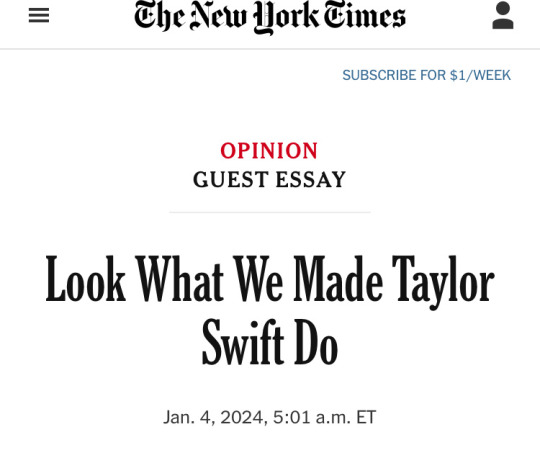
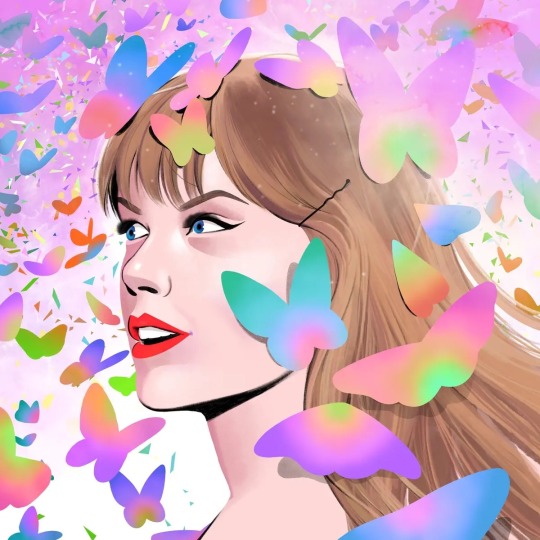
In 2006, the year Taylor Swift released her first single, a closeted country singer named Chely Wright, then 35, held a 9-millimeter pistol to her mouth. Queer identity was still taboo enough in mainstream America that speaking about her love for another woman would have spelled the end of a country music career. But in suppressing her identity, Ms. Wright had risked her life.
In 2010, she came out to the public, releasing a confessional memoir, “Like Me,” in which she wrote that country music was characterized by culturally enforced closeting, where queer stars would be seen as unworthy of investment unless they lied about their lives. “Country music,” she wrote, “is like the military — don’t ask, don’t tell.”
The culture in which Ms. Wright picked up that gun — the same one in which Ms. Swift first became a star — was stunningly different from today’s. It’s dizzying to think about the strides that have been made in Americans’ acceptance of the L.G.B.T.Q. community over the past decade: marriage equality, queer themes dominating teen entertainment, anti-discrimination laws in housing and, for now, in the workplace. But in recent years, a steady drip of now-out stars — Cara Delevingne, Colton Haynes, Elliot Page, Kristen Stewart, Raven-Symoné and Sam Smith among them — have disclosed that they had been encouraged to suppress their queerness in order to market projects or remain bankable.
The culture of country music hasn’t changed so much that homophobia is gone. Just this past summer, Adam Mac, an openly gay country artist, was shamed out of playing at a festival in his hometown because of his sexual orientation. In September, the singer Maren Morris stepped away from country music; she said she did so in part because of the industry’s lingering anti-queerness. If country music hasn’t changed enough, what’s to say that the larger entertainment industry — and, by extension, our broader culture — has?
Periodically, I return to a video, recorded by a shaky hand more than a decade ago, of Ms. Wright answering questions at a Borders bookstore about her coming out. She likens closeted stardom to a blender, an “insane” and “inhumane” heteronormative machine in which queer artists are chewed to bits.
“It’s going to keep going,” Ms. Wright says, “until someone who has something to lose stands up and just says ‘I’m gay.’ Somebody big.” She continues: “We need our heroes.”
What if someone had already tried, at least once, to change the culture by becoming such a hero? What if, because our culture had yet to come to terms with homophobia, it wasn’t ready for her?
What if that hero’s name was Taylor Alison Swift?
In the world of Taylor Swift, the start of a new “era” means the release of new art (an album and the paratexts — music videos, promotional ephemera, narratives — that supplement it) and a wholesale remaking of the aesthetics that will accompany its promotion, release and memorializing. In recent years, Ms. Swift has dominated pop culture to such a degree that these transformations often end up altering American culture in the process.
In 2019, she was set to release a new album, “Lover,” the first since she left Big Machine Records, her old Nashville-based label, which she has since said limited her creative freedom. The aesthetic of what would be known as the “Lover Era” emerged as rainbows, butterflies and pastel shades of blue, purple and pink, colors that subtly evoke the bisexual pride flag.
On April 26, Lesbian Visibility Day, Ms. Swift released the album’s lead single, “ME!,” in which she sings about self-love and self-acceptance. She co-directed a campy music video to accompany it, which she would later describe as depicting “everything that makes me, me.” It features Ms. Swift dancing at a pride parade, dripping in rainbow paint and turning down a man’s marriage proposal in exchange for a … pussy cat.
At the end of June, the L.G.B.T.Q. community would celebrate the 50th anniversary of the Stonewall Riots. On June 14, Ms. Swift released the video for her attempt at a pride anthem, “You Need to Calm Down,” in which she and an army of queer celebrities from across generations — the “Queer Eye” hosts, Ellen DeGeneres, Billy Porter, Hayley Kiyoko, to name a few — resist homophobia by living openly. Ms. Swift sings that outrage against queer visibility is a waste of time and energy: “Why are you mad, when you could be GLAAD?”
The video ends with a plea: “Let’s show our pride by demanding that, on a national level, our laws truly treat all of our citizens equally.” Many, in the press and otherwise, saw the video as, at best, a misguided attempt at allyship and, at worst, a straight woman co-opting queer aesthetics and narratives to promote a commercial product.
Then, Ms. Swift performed “Shake It Off” as a surprise for patrons at the Stonewall Inn. Rumors — that were, perhaps, little more than fantasies — swirled in the queerer corners of her fandom, stoked by a suggestive post by the fashion designer Christian Siriano. Would Ms. Swift attend New York City’s WorldPride march on June 30? Would she wear a dress spun from a rainbow? Would she give a speech? If she did, what would she declare about herself?
The Sunday of the march, those fantasies stopped. She announced that the music executive Scooter Braun, who she described as an “incessant, manipulative” bully, had purchased her masters, the lucrative original recordings of her work.
Ms. Swift’s “Lover” was the first record that she created with nearly unchecked creative freedom. Lacking her old label’s constraints, she specifically chose to feature activism for and the aesthetics of the L.G.B.T.Q. community in her confessional, self-expressive art. Even before the sale of her masters, she appeared to be stepping into a new identity — not just an aesthetic — that was distinct from that associated with her past six albums.
When looking back on the artifacts of the months before that album’s release, any close reader of Ms. Swift has a choice. We can consider the album’s aesthetics and activism as performative allyship, as they were largely considered to be at the time. Or we can ask a question, knowing full well that we may never learn the answer: What if the “Lover Era” was merely Ms. Swift’s attempt to douse her work — and herself — in rainbows, as so many baby queers feel compelled to do as they come out to the world?
There’s no way of knowing what could have happened if Ms. Swift’s masters hadn’t been sold. All we know is what happened next. In early August, Ms. Swift posted a rainbow-glazed photo of a series of friendship bracelets, one of which says “PROUD” with beads in the color of the bisexual pride flag. Queer people recognize that this word, deployed this way, typically means that someone is proud of their own identity. But the public did not widely view this as Ms. Swift’s coming out.
Then, Vogue released an interview with Ms. Swift that had been conducted in early June. When discussing her motivations for releasing “You Need to Calm Down,” Ms. Swift said, “Rights are being stripped from basically everyone who isn’t a straight white cisgender male.” She continued: “I didn’t realize until recently that I could advocate for a community that I’m not a part of.” That statement suggests that Ms. Swift did not, in early June, consider herself part of the L.G.B.T.Q. community; it does not illuminate whether that is because she was a straight, cis ally or because she was stuck in the shadowy, solitary recesses of the closet.
On Aug. 22, Ms. Swift publicly committed herself to the as-of-then-unproven project of rerecording and rereleasing her first six albums. The next day, she finally released “Lover,” which raises more questions than it answers. Why does she have to keep secrets just to keep her muse, as all her fans still sing-scream on “Cruel Summer”? About what are the “hundred thrown-out speeches I almost said to you,” in her chronicle of self-doubt, “The Archer,” if not her identity? And what could the album’s closing words, which come at the conclusion of “Daylight,” a song about stepping out of a 20-year darkness and choosing to “let it go,” possibly signal?
I want to be defined by the things that I love,
Not the things I hate,
Not the things that I’m afraid of, I’m afraid of,
Not the things that haunt me in the middle of the night,
I just think that,
You are what you love.
The first time I viewed “Lover” through the prism of queerness, I felt delirious, almost insane. I kept wondering whether what I was perceiving in her work was truly there or if it was merely a mirage, born of earnest projection.
My longtime reading of Ms. Swift’s celebrity — like that of a majority of her fan base — had been stuck in the lingering assumptions left by a period that began more than a decade and a half ago, when a girl with an overexaggerated twang, Shirley Temple curls and Georgia stars in her eyes became famous. Then, she presented as all that was to be expected of a young starlet: attractive yet virginal, knowing yet naïve, not talented enough to be formidable, not commanding enough to be threatening, confessional, eager to please. Her songs earnestly depicted the fantasies of a girl raised in a traditional culture: high school crushes and backwoods drives, princelings and wedding rings, declarations of love that climax only in a kiss — ideally in the pouring rain.
When Ms. Swift was trying to sell albums in that late-2000s media environment, her songwriting didn’t match the image of a sex object, the usual role reserved for female celebrities in our culture. Instead, the story the public told about her was that she laundered her affection to a litter of promising grown men, in exchange for songwriting inspiration. A young Ms. Swift contributed to this narrative by hiding easy-to-decode clues in liner notes that suggested a certain someone was her songs’ inspiration (“SAM SAM SAM SAM SAM SAM,” “ADAM,” “TAY”) or calling out an ex-boyfriend on the “Ellen” show and “Saturday Night Live.” Despite the expansive storytelling in Ms. Swift’s early records, her public image often cast a man’s interest as her greatest ambition.
As Ms. Swift’s career progressed, she began to remake that image: changing her style and presentation, leaving country music for pop and moving from Nashville to New York. By 2019, her celebrity no longer reflected traditional culture; it had instead become a girlboss-y mirror for another dominant culture — that of white, cosmopolitan, neoliberal America.
But in every incarnation, the public has largely seen those songs — especially those for which she doesn’t directly state her inspiration — as cantos about her most recent heterosexual love, whether that idea is substantiated by evidence or not. A large portion of her base still relishes debating what might have happened with the gentleman caller who supposedly inspired her latest album. Feverish discussions of her escapades with the latest yassified London Boy or mustachioed Mr. Americana fuel the tabloid press — and, embarrassingly, much of traditional media — that courts fan engagement by relentlessly, unquestioningly chronicling Ms. Swift’s love life.
Even in 2023, public discussion about the romantic entanglements of Ms. Swift, 34, presumes that the right man will “finally” mean the end of her persistent husbandlessness and childlessness. Whatever you make of Ms. Swift’s extracurricular activities involving a certain football star (romance for the ages? strategic brand partnership? performance art for entertainment’s sake?), the public’s obsession with the relationship has been attention-grabbing, if not lucrative, for all parties, while reinforcing a story that America has long loved to tell about Ms. Swift, and by extension, itself.
Because Ms. Swift hasn’t undeniably subverted our culture’s traditional expectations, she has managed, in an increasingly fractured cultural environment, to simultaneously capture two dominant cultures — traditional and cosmopolitan. To maintain the stranglehold she has on pop culture, Ms. Swift must continue to tell a story that those audiences expect to consume; she falls in love with a man or she gets revenge. As a result, her confessional songs languish in a place of presumed stasis; even as their meaning has grown deeper and their craft more intricate, a substantial portion of her audience’s understanding of them remains wedded to the same old narratives.
But if interpretations of Ms. Swift’s art often languish in stasis, so do the millions upon millions of people who love to play with the dollhouse she has constructed for them. Her dominance in pop culture and the success of her business have given her the rare ability to influence not only her industry but also the worldview of a substantial portion of America. How might her industry, our culture and we, ourselves, change if we made space for Ms. Swift to burn that dollhouse to the ground?
Anyone considering the whole of Ms. Swift’s artistry — the way that her brilliantly calculated celebrity mixes with her soul-baring art — can find discrepancies between the story that underpins her celebrity and the one captured by her songs. One such gap can be found in her “Lover” era. Others appear alongside “dropped hairpins,” or the covert ways someone can signal queer identity to those in the know while leaving others comfortable in their ignorance. Ms. Swift dropped hairpins before “Lover” and has continued to do so since.
Sometimes, Ms. Swift communicates through explicit sartorial choices — hair the colors of the bisexual pride flag or a recurring motif of rainbow dresses. She frequently depicts herself as trapped in glass closets or, well, in regular closets. She drops hairpins on tour as well, paying tribute to the Serpentine Dance of the lesbian artist Loie Fuller during the Reputation Tour or referencing “The Ladder,” one of the earliest lesbian publications in the United States, in her Eras Tour visuals.
Dropped hairpins also appear in Ms. Swift’s songwriting. Sometimes, the description of a muse — the subject of her song, or to whom she sings — seems to fit only a woman, as it does in “It’s Nice to Have a Friend,” “Maroon” or “Hits Different.” Sometimes she suggests a female muse through unfulfilled rhyme schemes, as she does in “The Very First Night,” when she sings “didn’t read the note on the Polaroid picture / they don’t know how much I miss you” (“her,” instead of that pesky little “you,” would rhyme). Her songwriting also noticeably alludes to poets whose muses the historical record incorrectly cast as men — Emily Dickinson chief among them — as if to suggest the same fate awaits her art. Stunningly, she even explicitly refers to dropping hairpins, not once, but twice, on two separate albums.
In isolation, a single dropped hairpin is perhaps meaningless or accidental, but considered together, they’re the unfurling of a ballerina bun after a long performance. Those dropped hairpins began to appear in Ms. Swift’s artistry long before queer identity was undeniably marketable to mainstream America. They suggest to queer people that she is one of us. They also suggest that her art may be far more complex than the eclipsing nature of her celebrity may allow, even now.
Since at least her “Lover” era, Ms. Swift has explicitly encouraged her fans to read into the coded messages (which she calls “Easter eggs”) she leaves in music videos, social media posts and interviews with traditional media outlets, but a majority of those fans largely ignore or discount the dropped hairpins that might hint at queer identity. For them, acknowledging even the possibility that Ms. Swift could be queer would irrevocably alter the way they connect with her celebrity, the true product they’re consuming.
There is such public devotion to the traditional narrative Ms. Swift embodies because American culture enshrines male power. In her sweeping essay, “Compulsory Heterosexuality and Lesbian Existence,” the lesbian feminist poet Adrienne Rich identified the way that male power cramps, hinders or devalues women’s creativity. All of the sexist undertones with which Ms. Swift’s work can be discussed (often, even, by fans) flow from compulsory heterosexuality, or the way patriarchy draws power from the presumption that women naturally desire men. She must write about men she surely loves or be unbankable; she must marry and bear children or remain a child herself; she must look like, in her words, a “sexy baby” or be undesirable, “a monster on the hill.”
A woman who loves women is most certainly a monster to a society that prizes male power. She can fulfill none of the functions that a traditional culture imagines — wife, mother, maid, mistress, whore — so she has few places in the historical record. The Sapphic possibility of her work is ignored, censored or lost to time. If there is queerness earnestly implied in Ms. Swift’s work, then it’s no wonder that it, like that of so many other artists before her, is so often rendered invisible in the public imagination.
While Ms. Swift’s songs, largely written from her own perspective, cannot always conform to the idea of a woman our culture expects, her celebrity can. That separation, between Swift the songwriter and Swift the star, allows Ms. Swift to press against the golden birdcage in which she has found herself. She can write about women’s complexity in her confessional songs, but if ever she chooses not to publicly comply with the dominant culture’s fantasy, she will remain uncategorizable, and therefore, unsellable.
Her star — as bright as it is now — would surely dim.
Whether she is conscious of it or not, Ms. Swift signals to queer people — in the language we use to communicate with one another — that she has some affinity for queer identity. There are some queer people who would say that through this sort of signaling, she has already come out, at least to us. But what about coming out in a language the rest of the public will understand?
The difference between any person coming out and a celebrity doing so is the difference between a toy mallet and a sledgehammer. It’s reasonable for celebrities to be reticent; by coming out, they potentially invite death threats, a dogged tabloid press that will track their lovers instead of their beards, the excavation of their past lives, a torrent of public criticism and the implosion of their careers. In a culture of compulsory heterosexuality, to stop lying — by omission or otherwise — is to risk everything.
American culture still expects that stars are cis and straight until they confess themselves guilty. So, when our culture imagines a celebrity’s coming out, it expects an Ellen-style announcement that will submerge the past life in phoenix fire and rebirth the celebrity in a new image. In an ideal culture, wearing a bracelet that says “PROUD,” waving a pride flag onstage, placing a rainbow in album artwork or suggestively answering fan questions on Instagram would be enough. But our current reality expects a supernova.
Because of that expectation, stars end up trapped behind glass, which is reinforced by the tabloid press’s subtle social control. That press shapes the public’s expectations of others’ identities, even when those identities are chasms away from reality. Celebrities who master this press environment — Ms. Swift included — can bolster their business, but in doing so, they reinforce a heteronormative culture that obsesses over pregnancy, women’s bodies and their relationships with men.
That environment is at odds with the American movement for L.G.B.T.Q. equality, which still has fights to win — most pressingly, enshrining trans rights and squashing nonsensical culture wars. But lately I’ve heard many of my young queer contemporaries — and the occasional star — wonder whether the movement has come far enough to dispense with the often messy, often uncomfortable process of coming out, over and over again.
That questioning speaks to an earnest conundrum that queer people confront regularly: Do we live in this world, or the world to which we ought to aspire?
Living in aspiration means ignoring the convention of coming out in favor of just … existing. This is easier for those who can pass as cis and straight if need be, those who are so wealthy or white that the burden of hiding falls to others and those who live in accepting urban enclaves. This is a queer life without friction; coming out in a way straight people can see is no longer a prerequisite for acceptance, fulfillment and equality.
This aspiration is tremendous, but in our current culture, it is available only to a privileged few. Should such an inequality of access to aspiration become the accepted state of affairs, it would leave those who can’t hide to face society’s cruelest actors without the backing of a vocal, activated community. So every queer person who takes issue with the idea that we must come out ought to ask a simple question — what do we owe one another?
If coming out is primarily supposed to be an act of self-actualization, to form our own identities, then we owe one another nothing. This posture recognizes that the act of coming out implicitly reinforces straight and cis identities as default, which is not worth the rewards of outness.
But if coming out is supposed to be a radical act of resistance that seeks to change the way our society imagines people to be, then undeniable visibility is essential to make space for those without power. In this posture, queer people who can live in aspiration owe those who cannot a real world in which our expansive views of love and gender aren’t merely tolerated but celebrated. We have no choice but to actively, vocally press against the world we’re in, until no one is stuck in it.
And so just for a little while longer, we need our heroes.
But if queer people spend all of our time holding out for a guiding light, we might forgo a more pressing question that if answered, just might inch all of us a bit closer to aspiration. The next time heroes appear, are we ready to receive them?
It takes neither a genius nor a radical to see queerness implied by Ms. Swift’s work. But figuring out how to talk about it before the star labels herself is another matter. Right now, those who do so must inject our perceptions with caveats and doubt or pretend we cannot see it (a lie!) — implicitly acquiescing to convention’s constraints in the name of solidarity.
Lying is familiar to queer people; we teach ourselves to do it from an early age, shrouding our identities from others, and ourselves. It’s not without good reason. To maintain the safety (and sometimes the comfort) of the closet, we lie to others, and, most crucially, we allow others to believe lies about us, seeing us as something other than ourselves. Lying is doubly familiar to those of us who are women. To reduce friction, so many of us still shrink life to its barest version in the name of honor or safety, rendering our lives incomplete, our minds lobotomized and our identities unexplored.
By maintaining a culture of lying about what we, uniquely, have the knowledge and experience to see, we commit ourselves to a vow of silence. That vow may protect someone’s safety, but when it is applied to works of culture, it stymies our ability to receive art that has the potential to change or disrupt us. As those with queer identity amass the power of commonplaceness, it’s worth questioning whether the purpose of one of the last great taboos that constrains us befits its cost.
In every case, is the best form of solidarity still silence?
I know that discussing the potential of a star’s queerness before a formal declaration of identity feels, to some, too salacious and gossip-fueled to be worthy of discussion. They might point to the viciousness of the discourse around “queerbaiting” (in which I have participated); to the harm caused by the tabloid press’s dalliances with outing; and, most crucially, to the real material sacrifices that queer stars make to come out, again and again, as reasons to stay silent.
I share many of these reservations. But the stories that dominate our collective imagination shape what our culture permits artists and their audiences to say and be. Every time an artist signals queerness and that transmission falls on deaf ears, that signal dies. Recognizing the possibility of queerness — while being conscious of the difference between possibility and certainty — keeps that signal alive.
So, whatever you make of Ms. Swift’s sexual orientation or gender identity (something that is knowable, perhaps, only to her) or the exact identity of her muses (something better left a mystery), choosing to acknowledge the Sapphic possibility of her work has the potential to cut an audience that is too often constrained by history, expectation and capital loose from the burdens of our culture.
To start, consider what Ms. Swift wrote in the liner notes of her 2017 album, “reputation”: “When this album comes out, gossip blogs will scour the lyrics for the men they can attribute to each song, as if the inspiration for music is as simple and basic as a paternity test.”
Listen to her. At the very least, resist the urge to assume that when Ms. Swift calls the object of her affection “you” in a song, she’s talking about a man with whom she’s been photographed. Just that simple choice opens up a world of Swiftian wordplay. She often plays with pronouns, trading “you” and “him” so that only someone looking for a distinction between two characters might find one. Turns of phrase often contain double or even triple meanings. Her work is a feast laid specifically for the close listener.
Choosing to read closely can also train the mind to resist the image of an unmarried woman that compulsory heterosexuality expects. And even if it is only her audience who points at rainbows, reading Ms. Swift’s work as queer is still worthwhile, for it undermines the assumption that queer identity impedes pop superstardom, paving the way for an out artist to have the success Ms. Swift has.
After all, would it truly be better to wait to talk about any of this for 50, 60, 70 years, until Ms. Swift whispers her life story to a biographer? Or for a century or more, when Ms. Swift’s grandniece donates her diaries to some academic library, for scholars to pore over? To ensure that mea culpas come only when Ms. Swift’s bones have turned to dust and fragments of her songs float away on memory’s summer breeze?
I think not. And so, I must say, as loudly as I can, “I can see you,” even if I risk foolishness for doing so.
I remember the first time I knew I had seen Taylor Alison Swift break free from the trap of stardom. I wasn’t sitting in a crowded stadium in the pouring rain or cuddled up in a movie theater with a bag of popcorn. I was watching a grainy, crackling livestream of the Eras Tour, captured on a fan’s phone.
It’s late at night, the beginning of her acoustic set of surprise songs, this time performed in a yellow dress. She begins playing “Hits Different.” It’s a new song, full of puns, double entendres and wordplay, that toys with the glittering identities in which Ms. Swift indulges.
She’s rushing, as if stopping, even for a second, will cause her to lose her nerve. She stumbles at the bridge, pauses and starts again; the queen of bridges will not mess this up, not tonight.
There it is, at the bridge’s end: “Bet I could still melt your world; argumentative, antithetical dream girl.” An undeniable declaration of love to a woman. As soon as those words leave her lips, she lets out a whoop, pacing around the stage with a grin that cannot be contained.
For a moment, Ms. Swift was out of the woods she had created for herself as a teenager, floating above the trees. The future was within reach; she would, and will, soon take back the rest of her words, her reputation, her name. Maybe the world would see her, maybe it wouldn’t.
But on that stage, she found herself. I was there. Through a fuzzy fancam, I saw it.
And somehow, that was everything.
#nyt x Gaylor swift#Gaylor swift x the msm#mainstream media x gaylor swift#gaylor fandom#Swiftgron#Taymily#tily#the New York Times article
28 notes
·
View notes
Text
a quick retrospective on sabrina's career 💭
hiya! some of you might have seen this video already but if not, i highly recommend it:
youtube
two pop culture commentators, Nicky and Coco talk about the slow rise of sabrina's career. they discuss how sabrina's gotten to where she is now, and why a "slow burn," is often times better than an overnight rise to fame.
i wanted to share this video as a jumping off point. i am so tired of certain people invalidating sabrina's career. i want to clear up some misconceptions and ignorant talking points that people make up regarding sabrina's career. more under the cut. ♥️
she is not an "industry plant."
industry plant definition: a pejorative used to describe musicians who ostensibly become popular through nepotism, inheritance, wealth, or their connections in the music industry rather than on their own merits.
list of bullshit haters say:
"sabrina is only famous because of the driver's license drama.."
personally, i cannot stand when people say this. it completely disregards the fact that this drama was very harmful to sabrina's mental and emotional health, as well as her career. you can say that any press is good press but there are people who will forever diminish her as just "the blonde girl." people need to stop acting as if sabrina was done a favor. a favor does not include death threats and a lifetimes worth of hate that she still receives to this day.
2. "taylor (swift) only chose her as an opening act to get back at olivia (rodrigo)" / "sabrina is only opening for taylor because she needed the help and olivia didn't."
pettiness is available to all ages. however, taylor alison swift is a 34 year old woman. she is a well-experienced musician who takes many younger people in the industry under her wing. this statement recycles the bullshit narratives that the media has created about taylor, that she's vindictive and immature. this statement also mischaracterizes sabrina and taylor's relationship. it is not new.
taylor has mentioned sabrina as far back as jingle ball 2017! in 2020, sabrina was sent a cardigan during the release of folklore. later taylor would go on to send sabrina red tv merch. the narrative that taylor suddenly befriended sabrina after cutting ties with olivia rodrigo some point after 2021 is absolute... nonsense (sorry). *and i'm pretty sure there is not even any real conflict between taylor and olivia but i don't follow olivia and ultimately don't care.
so why is sabrina suddenly blowing up? because nonsense is indeed a pop hit! sabrina having a new nonsense outro every night of the emails i can't send tour blew up on tiktok. olivia rodrigo had nothing to do with that. taylor had nothing to do with that. that was all sabrina. feather was a great follow up.
sabrina has been in the music/entertainment industry for ten years now. before emails i can't send, sabrina had already released 4 albums and headlined 3 tours. this means that she had already grown a strong base of fans that has been with her for years, long before emails. has taylor given her a major platform? has she become a mentor to sabrina? absolutely. sabrina has loved her for as long as a lot of us have - since we were young children. that doesn't mean she or anyone else should get credit for the years of hard work that sabrina has put in.
charting does not equal talent. people love to mock sabrina's career by saying she is unable to chart. there are an endless amount of talented musicians that don't get mass radio play or win awards because their record label - if they even have one, is lacking. for years, carpenters railed against hollywood records and wished for sabrina to move to a different label. finally in january of 2021, sabrina signed to island records. so far, they have given her more opportunities. sabrina released a major album with emails i can't send, she has been opening for taylor swift, shes like.. the coolest girl ever. people need to stop trying to invalidate her career and talent.
i know i may be “preaching to the choir” but ty for reading! 。・゚゚・ again, i recommend the lovely video above.
8 notes
·
View notes
Text
happy birthday to my hero.
happy birthday to the person who has been here for me for 17 years. the person who has a song for every emotion and situation I’m experiencing. the person who gives me a reason to get up in the morning and the person I can always rely on to make me feel better and included and heard and appreciated and valued and l o v e d.
happy birthday to the music industry, the woman that you are, Taylor Alison Swift.
I hope you know how deeply loved you are by the swifties of the world. we love you Taylor.
Happy Birth-tay Queen 🤍🫶🏼

4 notes
·
View notes
Text
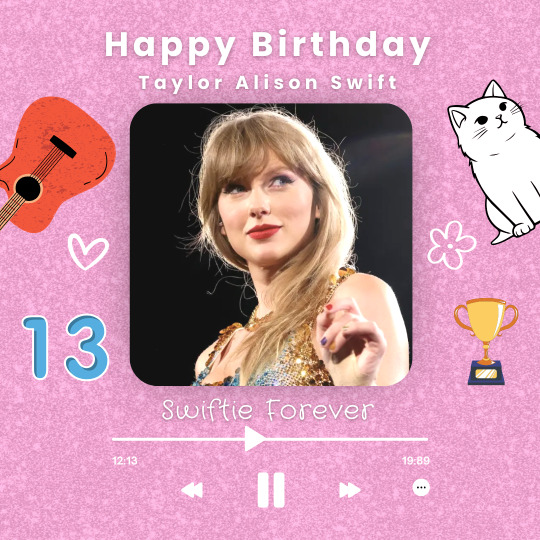
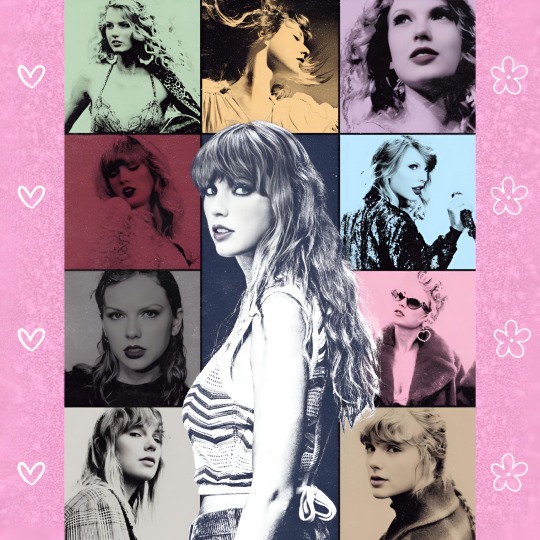
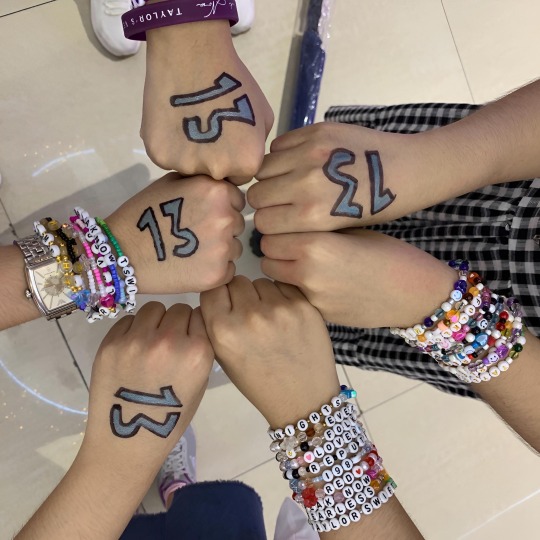


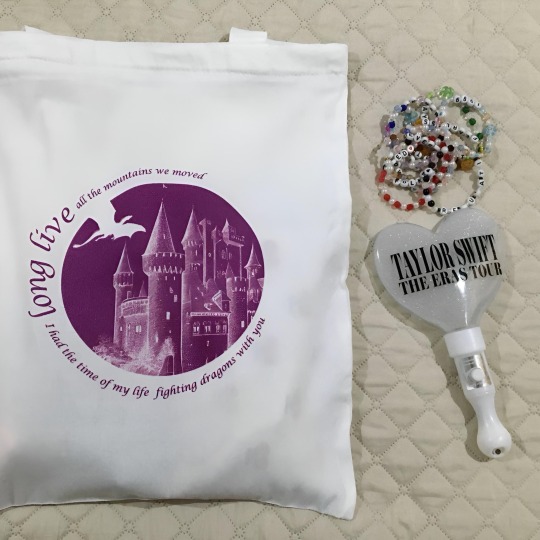

On December 13th 1989, the MOST talented, genius, inspiring, humble, caring and fearless woman this world has ever seen was born. Her name was Taylor Alison Swift ✨
She’s the music industry, an award-winning timeless superstar, America’s sweetheart, owner of the lucky number 1️⃣3️⃣, a record-breaking artist and a visionary with an immaculate poetic pen~
✍️🎵🎸👏
Truly a ONE IN A MILLION 🤩
Happy happy birthday Queen TAY 🎂🎉
I love you to infinity & beyond!!! ♾️ 😘
PS: Excited to see you on March for the eras tour Singapore!!! 🙌
3 notes
·
View notes
Text
Happy 34th birthday to the music industry taylor Alison swift ♥️
4 notes
·
View notes
Text
Taylor Swift is sending a powerful message to women on the Eras tour
Analysis by Emily Halnon, CNN
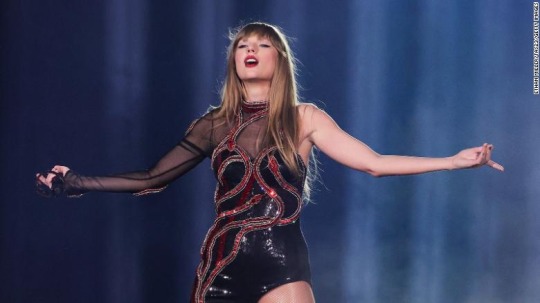
Taylor Swift performs onstage during the "Taylor Swift | The Eras Tour" at Allegiant Stadium on March 24 in Las Vegas.
(CNN) My first stirrings of discomfort at Taylor Swift's show in Las Vegas hit after the infectious beat faded from fan-favorite "Cruel Summer," the second song in her supersized set.
Swift strutted across the stage in a sequin bodysuit and matching boots. Her cat eye was drawn sharp enough to kill a man, as she says.
She thanked the crowd of thousands of cheering fans for their deafening support and as the roars died down, she paused, and then bellowed out the line that undid me — and sent a powerful message about embracing success to the tens of thousands of women in attendance.
"You're making me feel like I'm the first woman to ever headline Allegiant Stadium."
She flicked her gaze down to her biceps and pumped her arms in victory.
The crowd lost it. My jaw dropped. My gut clenched and braced itself for a blow.
I'd just heard Swift, a woman, bellow out her accomplishment, with no qualifiers, no, "I did a thing" and not a single ounce of humility to soften the punch.
It was just an unapologetic and audacious declaration of her success.
Challenging double standards
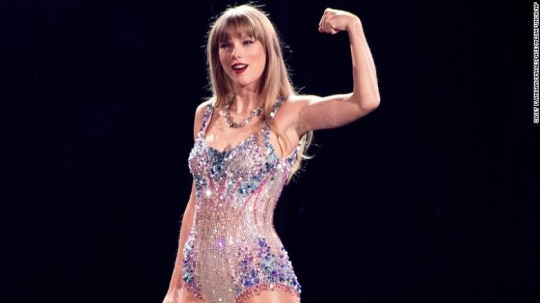
When I walked into Allegiant Stadium in Las Vegas, I expected to be blown away by Swift and the 44 songs she performs live for the "Eras Tour." But I didn't expect to feel uncomfortable at her declaration of her unbridled ambition.
The timing of her declaration was a little cheeky; it was part of her introduction to the song, "The Man," which calls attention to the sexist double standards that women face, including ones Swift has battled in the music industry.
"What's it like to brag about raking in dollars and getting bitches and models," she sang. "If I was out flashing my dollars, I'd be a bitch, not a baller."
When she shouted out her accomplishment in Las Vegas, alongside a matching victory dance, I'm sure it was meant to conjure masculinity and highlight the double standard surrounding success, since nothing Taylor Alison Swift does is unintentional. She's known for leaving an unending trail of Easter eggs for her fans to find and decipher, which reveal clues about things like album drops and the true meaning of a lyric.
She's a mastermind in everything she does, sings and shouts to a football stadium full of fans.
That's why, even if the timing was part of her performance around "The Man," it was also no accident that Swift decided to belt out her success that night.
And whether we were cringing in our seats, like me, or cheering her on, also like me, her words delivered a powerful message.
I'm insecure about my own ambition

Emily Halnon runs through Diamond Peak Wilderness on the Pacific Crest Traail.
The discomfort I felt had nothing to do with Swift or her record-setting performance. My inner cringe was fueled by my own insecurities with female ambition and the social conditioning that has taught me to shy away from owning my successes. I was projecting my own unease on Swift.
Intellectually, I root for ambitious women to take up space in the world, but emotionally, I've got some deep-seated resistance to the idea, as evidenced by my gut reaction.
Like Swift, who will perform for over three straight hours on every night of this 52-stop tour, I'm also an endurance athlete. I'm a long-distance trail runner, and while I'm not even close to being the Taylor Swift of ultra running, I have experienced some successes in my athletic endeavors — but I can barely talk about them in front of a single person, never mind 70 thousands of them.
Like, when I raced a 50-miler a couple of summers ago, and friends asked me how I did.
"I had a lot of fun," I'd say. "I felt strong all day."
I usually waited for my partner or someone else to fill-in-the-blank that I'd won the race. Or I'd just leave that detail out. I do that often, whether it's my finisher place, pace or distance.
I don't want to be 'that' woman
I don't want to brag, or seem cocky, competitive, or, heaven forbid, self-promotional. That phrase alone feels dirtier than the floor of a football stadium after a three-hour show.
I've watched women get villainized for ambition and success since I could say the words, "Hillary Clinton." I know the safer path for a woman is to be humble and modest.
When I decided to attempt a speed record on the 460-mile stretch of the Oregon Pacific Crest Trail, one of the hardest parts of the run was telling people about my goal, which was a requirement for this record.
I didn't want to come off as a strong and competitive woman, who believed that I was capable of achieving something big. I certainly didn't want to seem like I was chasing success, an ambitious woman with the audacity to be confident. The better story would be to stumble into an accomplishment, not to overtly hunt it down myself.
In my first draft of this essay, the one I didn't initially share with my editor, I omitted that I went on to set that record — and beat the men's times, as well. (Editor's note: One of her most notable runs was setting the overall Fastest Known Time on the 460-mile Oregon PCT in 7 days, 19 hours, and 23 minutes.)
She had a powerful impact on me
My discomfort in Las Vegas transitioned to awe, followed Swiftly by a "Hell yeah, Taylor."
By the time I was back home in Oregon, I couldn't stop thinking about how powerful it was that Swift was so bold. It didn't stop at that one statement — she delivered a three-hour masterclass in confidence and pride in what she's accomplished. And I liked it. I think most of us at Allegiant Stadium did. Over the course of this tour, millions of women will watch her share her success.
At least one of those women in the audience needed to hear her to celebrate her own success (and probably more than I would've guessed based on my initial reaction).
I watched clips of her performance at AT&T Stadium, home of the Dallas Cowboys, the next weekend. When the beat from "Cruel Summer" faded, she did it again.
"I'm the first artist to play three nights in this stadium," she shouted.
I watched her shimmy, her face full of unapologetic joy as she shook her hips in front of tens of thousands of people, and this time, I didn't cringe. I thought about how I can be a little more like Swift the next time I succeed.
ts1989fanatic in 2023 no successful woman should feel this way, and if just a few of those approximately 70,000 per show walk away feeling empowered by Taylor Swift as this writer did. Then we are at least making some progress.
10 notes
·
View notes
Note
Taylor has good music, yes!!!! but she is sooo incredibly overrated... like how she's everywhere and how much ppl praise her and like how she's basically in some way like literally god for some ppl?? like im a firm believer of do wtv u want 4ever but like... babes there is so much more to life than taylor alison swift... (for the unpop opinions)
strongly agree | agree | neutral | disagree | strongly disagree
listen she's one of my favourite artists and i do think she deserves all the hype because she's a great songwriter, an amazing performer and an incredibly hard-working person - i do believe what she's accomplishing with the eras tour is INSANE and quite literally no one else in the music industry is doing it like her rn BUT.........there's a but. i do agree that some fans exaggerate it a bit too much. like absolutely i get loving an artist that much but they do sometimes act like she's god + some of them are borderline obsessive and give off stalker vibes which is kinda creepy. i don't think she's overrated i just think the "taylor swift phenomenon" is the talk of the town, especially right now, and we're so overexposed to her whole thing as a public figure that it does end up seeming like that sometimes sjfhshfhs
2 notes
·
View notes